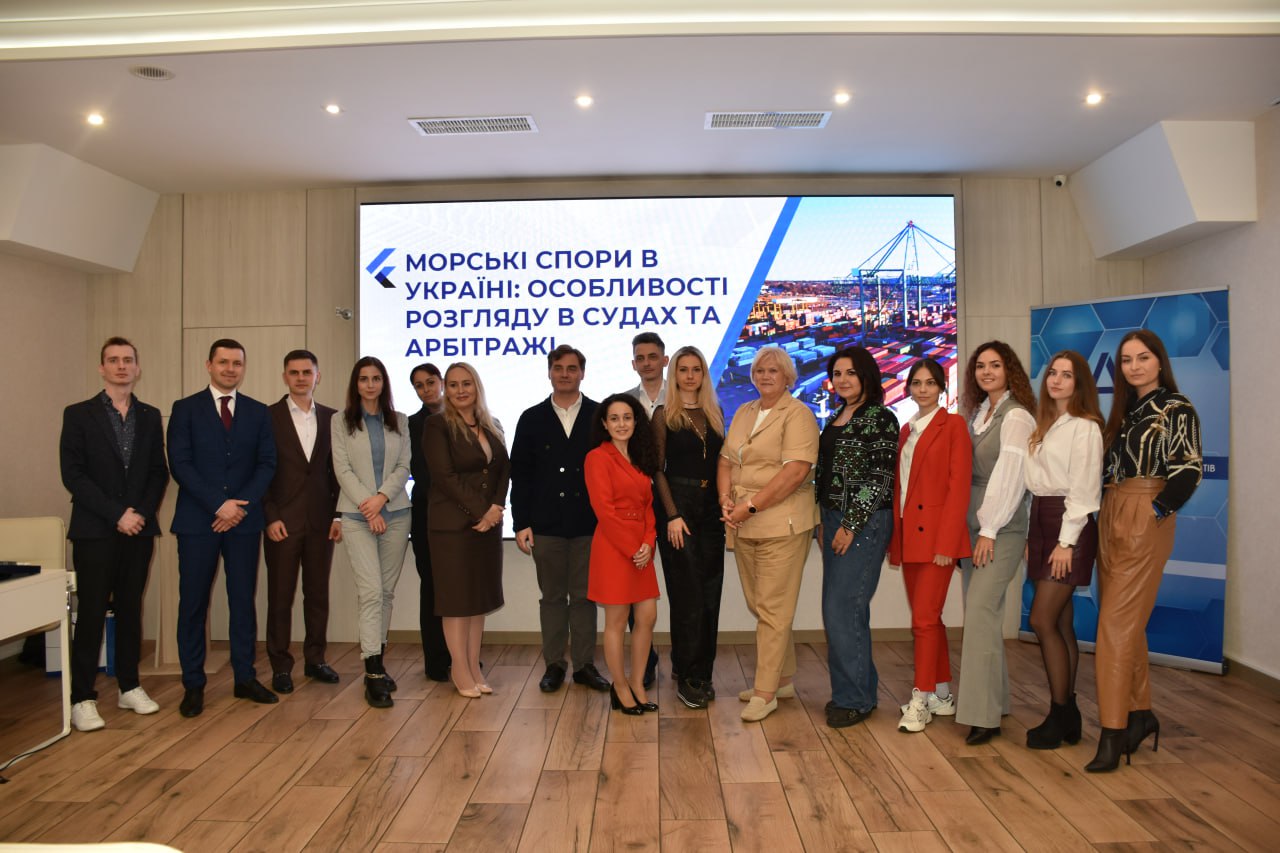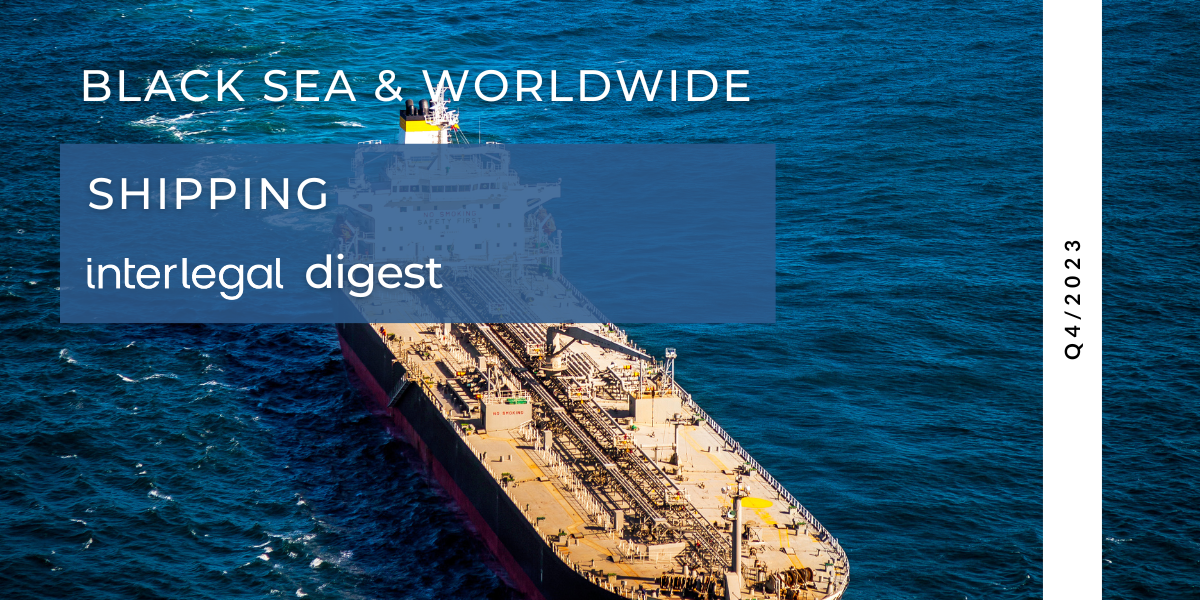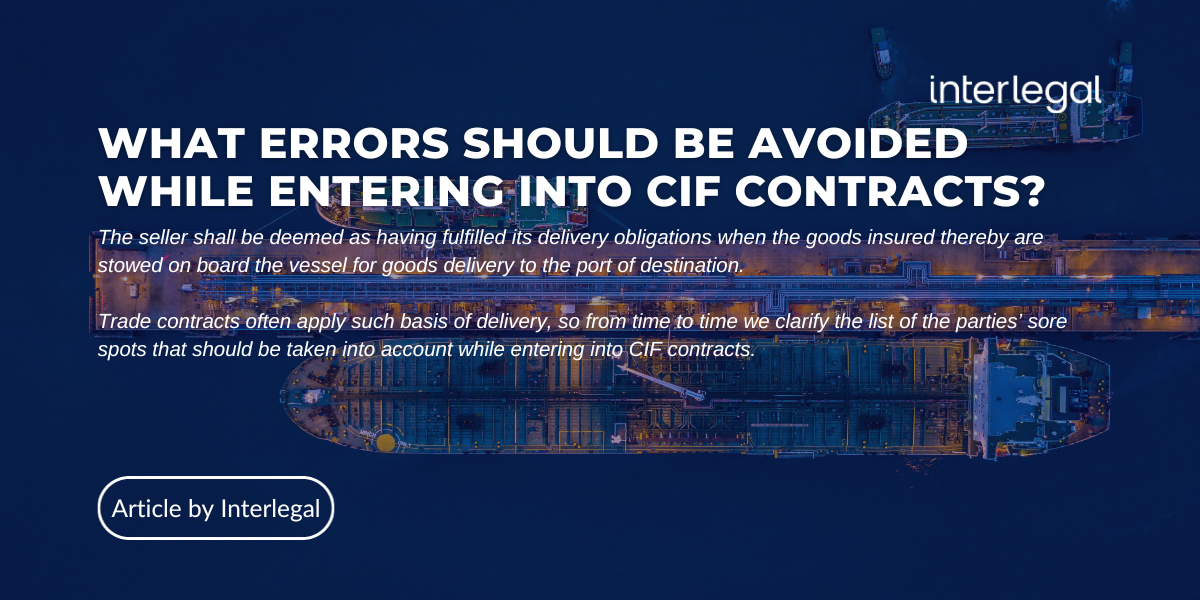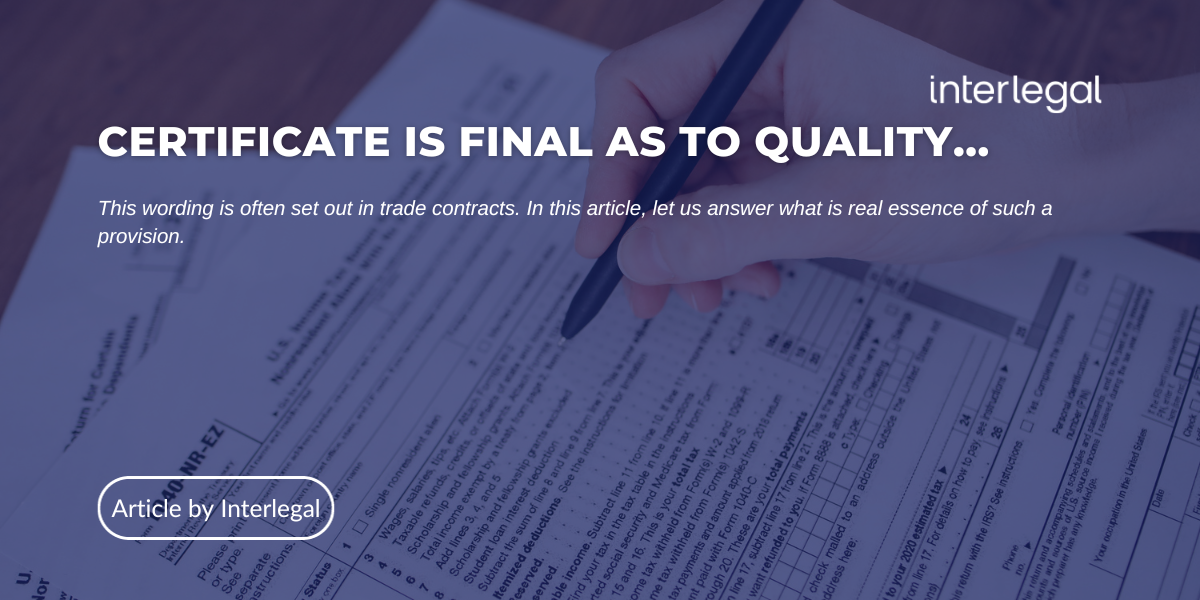How much does the port service market cost? Calculation attempt No. 1
18 October, 2017
4
In 2016 nearly 47 thousand employees engaged in the Ukrainian sea port service market earned income equal to ca. 1,700 million USD (approximate calculations).
The Ukrainian sea port service market for a long time existed as state-owned monopoly with state-owned enterprises prevailing, since port privatization either did not occur or was too restricted (as compared to many other economic sectors). First elements of market economy were private agencies, freight forwarding or stevedoring companies established in early 1990s. Since 1993 they started functioning at the Odessa Sea Port under joint venture agreements.
Market formation
Private sector development in stevedoring activity in early 2000s expanded the share of so-called open market. Such a difficult process faced frequent conflicts with state authorities. Port industry made the most notable step towards market economy just in 2012, following adoption of the Law of Ukraine on sea ports which legalized privatization in such industry, liberalized tariff formation, facilitated conditions for competition development at sea ports – in fact provided a legislative basis for establishment of an open sea port service market.
How to assess today sea port service market in Ukraine? Let us try to answer the following three questions:
a) How much does it cost?
b) How many companies (enterprises) are engaged?
c) How many people are employed?
First we will study elements of sea port service market, define their parameters and then we will calculate the required numbers by adding the obtained values. Of course the data will be approximate. Values in UAH will be converted in USD at the average exchange rate in 2016 – 1 to 25.55.
While assessing each market sector, we tried to rely both on available statistic data and arguments of recognized experts in relevant activities. Readers will make sure that experts often had different opinions.
Port dues
Almost all the vessels flying under the Ukrainian or foreign flags, while calling at sea ports, shall pay port dues. There are seven types: tonnage, canal, lighthouse, wharfage, anchorage, administrative and sanitary dues. They may be treated as payment for the opportunity to use our sea port infrastructure to be maintained and developed. Port dues and relevant discounts are governed by the Ministry of Infrastructure, as agreed with the Cabinet of Ministers of Ukraine.
Most dues are remitted as income to the State Enterprise “Ukrainian Sea Ports Authority” (USPA) which shall spend them solely for designated purpose – dredging works in port water areas and canals, maintenance of berth passport specifications etc. In 2016 USPA received port dues amounting to 193.6 million USD (4,946 million UAH), i.e. 58.3% from its total income.
A share of port dues shall be remitted to other structures. For instance, the whole administrative dues (ca. 6.7 million USD) are remitted to the state budget.
Lighthouse dues are designated for maintenance of the State Hydrographic Service of Ukraine (455.7 million UAH, i.e. 17.8 million USD in 2016). It renders navigation and hydrographic services in order to secure safe navigation. Its average number of employees made up 680 in 2016.
10% from tonnage dues are designated for maintenance of the State Enterprise “Maritime Search and Rescue Service” (167 million UAH, i.e. 6.5 million USD in 2016). Jointly with other earnings, MSRS incomes last year made up 177 million UAH, i.e. 6.66 million USD. It is engaged in people search and rescue within the maritime zone of Ukraine responsibility. Its average number of employees makes up 162. In fact MSRS commenced its operation after reorganization and withdrawal from USPA in May 2016.
Private companies constructing water areas, canals and berths at their own expense (Nika-Tera, Nibulon, TIS and many others) receive a share of tonnage and wharfage dues. Experts state that last year they received nearly 11.2 million USD.
In general, last year Ukraine received port dues equal to ca. 235.8 million USD.
Of course total amount of port dues depends directly on number and size of vessels calling at the Ukrainian sea ports (13,228 vessel calls in 2016).
Pilotage, traffic control and other services
Apart from port dues, USPA receives income from various activities. Today the Ukrainian sea ports have state monopoly for pilotage services. All the pilots are employed in the USPA “Delta-Pilot” Branch. According to USPA data, there are 180 pilots plus technical staff – in aggregate ca. 450 employees. Pilot dues for 2016 made up 734 million UAH, i.e. 28.7 million USD.
At the sea ports USPA also controls vessel traffic for appropriate dues. Last year traffic control dues made up 248 million UAH, i.e. 9.7 million USD.
USPA also receives income for providing the port operator access to berth (last year it made up 757 million UAH), berth use for cargo handling (54 million UAH), fleet service operations (58 million UAH), ice-breaking (19 million UAH) and other activities. Total USPA income in 2016 (including port dues) made up 8,481 million UAH, i.e. 331.9 million USD.
In late 2016 USPA central body and affiliates had 7,876 employees.
The Ukrainian port industry urgently needs investments, but the main problem is the governmental order on implementing regulations upon dividend payment to the budget for large enterprises equal to 75% from net profit.
Since USPA is a state-owned enterprise, last year it paid such dividends amounting to 2,314 million UAH. Aggregate taxes, fees and other duties payable to budgets of all levels made up 4,659 million UAH, i.e. 55% from all the USPA incomes. Other large state-owned enterprises commercial sea ports also make similar payments, so port industry has no costs for development and maintenance of sea port principal funds.
Stevedoring services
Since June 2013, after main provisions of the Law on Sea Ports of Ukraine entered into force, pricing for various cargo handling became free for state-owned enterprises too, i.e. state stevedoring companies were entitled to make prices. Last year 81 companies (and groups of companies) got engaged in such handling in Ukraine. We noted only those who handled not less that 20 thousand tons per year. Total cargo flow of the Ukrainian sea ports (including 2.8 million tons at the Ilyichevsk Fish Sea Port) made up 134.5 million tons.
Some companies are also engaged in towage, freight forwarding, agency and other services. Some do not treat stevedoring as their principal activity.
As for today 13 state-owned enterprises – commercial sea ports, only 10 got engaged in cargo handling in 2016 (except Odessa, Nikolayev and Belgorod-Dnestrovskiy Commercial Sea Ports). Lest year these 10 stevedoring companies handled 38.4 million tons, i.e. 28.5% from the total cargo flow of sea ports (134.5 million tons). Their income (without income from fleet service operations) made up 6,285 million UAH, i.e. 246 million USD.
Cargo flow among private stevedoring companies for last year made up 96.1 million tons. Such volume includes high percentage of high-rate cargos, such as container and grain cargos. According to expert data, their aggregate income for last year made up nearly 760 million USD, so total income of all the stevedoring companies engaged at the sea ports amounts to ca. 1,006 million USD.
Stevedoring companies received most incomes for loading and discharge operations, as well as for cargo storage and lots of other services, such as cargo sorting, separation, packing, fixing, weighing, stuffing in containers, wagon cleaning, mooring, sewage acceptance from vessels, lease of infrastructure facilities, handling equipment, floating craft and many others.
Rate recession
A logical effect of stevedoring market liberalization at the Ukrainian sea ports was rate recession for such work performance due to high competition among stevedores, against total cargo flow volume decrease.
Such recession was too uneven in different ports (somewhere such value even increased) – it worth a separate research. Let us study a few examples. For instance, last year State Enterprise “Yuzhnyi Commercial Sea Port” had to implement new complex rates on handling export and cabotage ore where tariff reduction depends on handling volume growth. Explanatory note to the Report for the previous year states that such forced action was aimed to preserve the current cargo flow and to prevent its refocusing on berths owned by other stevedoring companies which facilitated decrease of actual incomes from loading and discharge operations.
Due to tariff decrease at the State Enterprise “Reni Commercial Sea Port” under combatting competitors last year, average income rate for handling amounted to 85.1 UAH per ton – less than similar level for 2015 by 20.9 UAH (with transit grain from Moldova exceeding 80%).
Competition growth among grain terminals being actively developed for the last years caused grain handling complex rate in average from 16 – 17 USD per ton two years ago to 12 – 13 USD for 2016, etc.
Fleet service
It provides a wide range services to vessels staying at the Ukrainian sea ports. Towage operations make up over 95% of relevant incomes. From one hand, towage floating craft includes many units. Ministry of Infrastructure states that as of June 1, 2016, various Ukrainian state enterprises owned 96 tug boats of different types (without push tugs owned by the Ukrainian Danube Shipping Company). They include 19 tug boats owned by private companies (except Nibulon tug boats) – both private tug boats and leased at state-owned enterprises. Totally there are 115 tug boats.
Quantitative values are quite large. But as for quality of tug boats, in particular, owned by state enterprises, the fleet is old enough. Only 10 vessels may be treated as quite new (up to 10 years old). 63 tug boats are over 30 years old; the age of 39 among them exceeds 40 years. Structure and problems of towage floating craft are analyzed in details in the journal “Ports of Ukraine” No. 3, 2017.
Companies with own fleet service may be divided in two groups. First group includes state-owned enterprises: 12 commercial sea ports, USPA and Ukrtransnafta. Second group consists of private companies including Transship, Marconi, Ecoflot, Nibulon, Dnieper-Bug Port of the Nikolayev Alumina Plant and Ilyichevsk Fish Sea Port. Totally there are 20 state-owned and private companies.
To assess in USD equivalent the 2016 market level with the Ukrainian company fleet service, the rough calculation is the following.
Last year Chernomorsk Commercial Sea Port fleet service received 216.8 million UAH, while income of Mariupol Commercial Sea Port fleet service made up 91.6 million UAH. Total sum is 308.4 million UAH. Cargo flow made up 15.9 million tons at the Chernomorsk Commercial Sea Port and 6.9 million tons at the Mariupol Commercial Sea Port (22.8 million tons in aggregate). It should be noted that such aggregate cargo flow was handled by these two fleet services only. As for all the Ukrainian sea ports with aggregate cargo flow equal to 134.5 million tons in 2016, with regards to lower prices of private companies, we may state that total income of fleet service in 2016 made up ca. 1.7 billion UAH, i.e. ca. 65 million USD.
It is recommended to add to this sum the income earned from roadstead handling. Last year its volume at the Ukrainian sea ports was quite small – nearly 1.5 million tons, due to the Russian control over the Strait of Kerch and dredging works at the Yuzhnyi Sea Port facilitating call of Capsize vessels to be handled at the berth without additional loading at the roadstead.
Experts assess that roadstead handling incomes could reach 7 million USD, so aggregate income of fleet service will make up approximately 72 million USD.
Freight forwarding
It is too difficult to count income of freight forwarding companies operating with cargos passing the Ukrainian sea ports in 2016 (134.5 million tons) due to wide range of cargos and large amount of involved companies (including diversified).
In order to obtain any actual figures, we asked experts to calculate average prices per one ton (container, van) forwarding for the previous year under the largest cargo groups (grain, ore etc.). As the result, income from forwarding the principal cargo groups (118 million tons) made up nearly 133.9 million USD, while the whole cargo flow (134.5 million tons) could facilitate income amounting to ca. 152.5 million USD.
It is difficult also to determine, how many freight forwarding companies operate with cargos passing the Ukrainian sea ports. They include very large companies. For instance, top ten companies engaged in container cargo forwarding in 2016 handled 31.4% of the whole containers (in pcs.), while top five companies engaged in bulk cargo forwarding in 2016 handled 36.4% of the whole bulk cargos (in tons). There are also many companies with quite a small cargo flow.
With regards to the number of freight forwarders registered last year in the Port Community System, experts calculated aggregate number of companies (ca. 800 units) and employees engaged in freight forwarding (3500 – 4000 persons).
Agency services
In early 2000s, our journal reported that Ukraine had up to 300 agency companies (according to the Association of Maritime Agents of Ukraine). Today many experts believe that competition growth and business monopolization caused large reduction of such companies. But in early 2017 nearly 320 companies concluded agency agreements with USPA, so the number of agency companies remained almost unchanged. But in fact only a dozen of such companies may be treated as large. Top five companies in 2016 serviced 15.6% from the total number of vessel calls. Many agents serviced just one or two vessels per year. Experts state that such type industry employed nearly 600 – 700 persons.
How to assess agency service market volume? To service one large vessel call, an agent may receive 7 thousand USD, while for one small vessel call its income may decrease tenfold or even fifteen-fold. In one region with higher competition, service prices may be less than in another region with monopoly of large companies. Our experts have different opinions. Some of them state that general value of market volume makes up 1.5 thousand USD multiplied by the number of calls (13,228), while the others propose to multiply 2 million USD. We may suppose that agency service market costs roughly 20 – 25 million USD.
Fumigation
Fumigation means combatting pests and disease agents by means of toxic vapour or gas (fumigant). It is quite essential procedure for the industry, since Ukraine exports mainly products of vegetable origin (first of all, grain).
As stated above, last year the Ukrainian sea ports handled 40.3 million tons of grain. All these cargos were subject to disinfection procedure. Experts announce that average fumigation rate per one grain ton amounted to ca. 0.4 USD, therefore fumigation incomes in respect of grain for export made up nearly 16 million UDS. Fumigation applies also to other cargos, in particular, timber, in smaller volume.
Previously special companies having appropriate license were engaged in fumigation. Today such licensing is cancelled and the number of fumigation companies has increased, according to expert assessment, up to two dozens (with 300 employees), except short-lived companies.
Bunkering
Bunker and water supply on board of vessels is deemed as traditional service at sea ports. While preparing this material, I was surprised to find out that today bunkering (in particular, fuel oil) is a problem for the Ukrainian sea ports: nowhere to supply and no one is able to supply.
Experts noted that fuel market at the Ukrainian sea ports reached its peak in middle 2000s. Three private companies – Transbunker, Sintez Oil and Hydromarket – supplied on board of vessels nearly 450 – 500 thousand tons of bunker (in 2005 Transbunker alone supplied 362 thousand tons). But the market drastically recessed by 2016, especially for the post-revolution period: supplies reduced to 50 – 60 thousand tons. In fact only two or three companies with ca. 40 – 50 employees are engaged in bunkering.
One of the main reasons for drastic decrease are consequences from loss of the Crimea and military actions in the Eastern Ukraine, lower fuel prices at the Russian sea ports, absence of VAT return system under bunker purchase in Ukraine which makes fuel more expensive, as compared to nearby countries, and forces shipowners to apply schemes of obtaining fuel in neutral waters.
Due to the whole set of problems, Transbunker even had to sell its fleet – 10 bunkering vessels.
It should be noted that bunker cost faces a lot of fluctuations. In 2016 average fuel oil cost in Istanbul fluctuated from 160 USD per ton in January to 330 USD per ton in December, while average gasoil cost – from 340 USD per ton in January to 530 USD per ton in December. We may calculate roughly that in 2016 average fuel oil cost in Istanbul made up 245 USD per ton and average gasoil cost – 435 USD per ton.
Experts noted that in 2016 such small volumes of bunker supply at the Ukrainian sea ports (or nearby) concerned almost equally fuel oil and gasoil. We may suppose that in 2016 (at the Istanbul prices) fuel oil supply at our market made up 6 – 7 million USD while gasoil supply amounted to 11 – 13 million USD. Totally (under rough calculations) bunker market cost at our sea ports for the previous year made up ca. 17 – 20 million USD.
Vessel supplies
Apart from bunker, sea-going vessels calling at out ports may acquire various supplies including consumables, such as foodstuff, assets and equipment related to conventional safety requirements etc. Companies-suppliers are traditionally engaged in such kind of supply.
The Ukrainian National Ship Suppliers Association states that seven principal companies – valid or associated members thereof (Marco Ltd, Electric Engineering, Seago Marine, MSS, Fortune-Transit, Admiral Shipping and Plot) and twenty additional companies are engaged in the Ukrainian vessel supply market. In whole they employ nearly 250 – 300 persons.
Of course market volume strongly fluctuates every year. In the golden years it made up ca. 25 million USD. Due to market recession in 2016, the Ukrainian National Ship Suppliers Association assessed its volume equal to 15 – 17 million USD.
Other services
Sea ports and various nearby companies, enterprises and organizations provide also other numerous services (we did not calculate their volume): road, railway and sea carriages, insurance, dry port services, survey, brokerage, legal, security and many other services.
Today also port industrial areas have been developed. They produce from previously exported materials (raw materials) sunflower and other oils, chip, lumber and other commodities.
Number of employees
How many persons are employed in our sea port service market (i.e. at all its aforesaid sectors)?
We calculated that in late 2016 81 companies employed 31,300 persons engaged in stevedoring, including 14,800 employees of state-owned enterprises – commercial sea ports and 16,400 employees of private stevedoring companies. In general the Ukrainian companies and enterprises rendering the above port services had up to 47 thousand employees in 2016.
How much does the market cost?
With regards to the above market sectors only, we may suppose that in 2016 aggregate income generated by sea port service market reached nearly 1,700 million USD. Nearly 1,300 companies, enterprises and institutions with ca. 47 thousand employees got engaged in such activities.
Is it much or not? Maybe we would like to have a little bit more. A decade ago, I asked Arseniy Yatsenyuk at the press conference (he promoted political party “The front of changes” to the parliament), whether the Ukrainian maritime industry had any chances to become a state priority. He clearly replied ‘No”. Its obvious priorities are agriculture and mining, not maritime industry.
And he was right, even when Ukraine did not face occupation of the Crimea by the Russian Federation. He is still right today. Last year the Ukrainian GDP made up 93,458 million USD, where sea port service market share was equal to 1.82% only. Unfortunately this value will not grow even by adding small data upon shipbuilding, ship repair and sea craft (we will calculate them in the nearest future).
But this value may be doubled if we remind on the dozens of thousands of our seafarers hired on the vessels worldwide and bringing their earnings in Ukraine (up to 1.5 million USD per year, as stated by the Ukrainian Unity of Crewing Companies). They also represent maritime industry. But such incomes are deemed as part of shadow economy, since our government still has not found a mutually acceptable method to legalize such income.
Ministry of Economic Development states that in 2016 shadow economy made up 35% from the official GDP, i.e. 5% less that in 2015. Of course the following issue arises: where is the shadow in sea port service market? This issue needs a separate research.
We ask our professional readers to help us with calculations, to correct errors, to provide values and data, to propose the best method of obtaining more exact data and to announce conceptual offers. We will revert to this issue with regards to your advice and opinions and will publish a new article with clarified figures, called “How much does the port service market cost? Calculation attempt No. 2”.
Average rates for forwarding main types of cargos passing the Ukrainian sea ports in 2016
| Cargos | Cargo flow in 2016, million tons | Range of forwarding rates, 1 USD per ton | Average forwarding rates, 1 USD per ton | Forwarding incomes, million USD |
| Grain | 40.3 | 0.8 – 1.4 | 1.1 | 44.3 |
| Ore | 32.7 | 0.2 – 0.8 | 0.5 | 16.3 |
| Metal | 16.7 | 0.3 – 0.8 | 0.55 | 9.2 |
| Containers, pcs. | 389,937 pcs.(7.8 million tons) | 30 – 200 | 115 | 44.8 |
| Other bulk | 7.7 | 0.25 – 1 | 0.6 | 4.6 |
| Oil in bulk | 4.7 | 1.3 – 2 | 1.6 | 7.5 |
| Building materials | 4 | 0.25 – 1 | 0.6 | 2.4 |
| Chemicals in bulk | 3.2 | 0.3 – 0.5 | 0.4 | 1.3 |
| Cars, pcs. | 31,491 pcs.(1 million tons) | 20 – 200 | 110 | 3.5 |
| Total | 118.1 | 133.9 | ||
| Aggregate | 134.5 | 152.5 |
Number of employees in enterprises, companies and organizations rendering services at the Ukrainian sea ports in 2016
| Enterprises, companies, organizations | Number of employees |
| Total stevedoring companies | 31,300 |
| including 10 SE commercial sea ports | 14,900 |
| private stevedores | 16,400 |
| USPA | 7,870 |
| SE commercial sea ports not engaged in stevedoring** | 1,240 |
| State Hydrographic Service | 680 |
| Maritime Search and Rescue Service** | 160 |
| Private company fleet service | 180* |
| Agency companies | 600 – 700* |
| Bunkering companies | 50* |
| Vessel suppliers | 300* |
| Fumigation companies | 300* |
| Freight forwarders | 3,500 – 4,000* |
| Organizations and institutions*** | 690 |
| AGGREGATE | 46,870 – 47,470* |
* Expert review
** Odessa, Nikolayev and Belgorod-Dnestrovskiy Commercial Sea Ports
*** ChernomorNIIproekt, UkrNIIMF, Shipping Register of Ukraine, Inspectorate for Training and Certification of Seafarers
Structure and volume of the principal service market at the Ukrainian sea ports in 2016
| Types of services | Income, million USD | Share in market incomes, % | Number of companies, units |
| Port dues: | 235.8 | 13.8 | 7 |
| including USPA | 193.6 | 1 | |
| State Hydrographic Service | 17.8 | ||
| (aggregate income) | (18.2) | 1 | |
| Private companies | 11.2* | 3 | |
| State budget (administrative fee) | 6.7 | 1 | |
| Maritime Search and Rescue Service | 6.5 | ||
| (aggregate income) | (6.9) | 1 | |
| USPA other services: | 138.3 | 8.1 | |
| including pilotage | 28.7 | ||
| port operator access to berth | 29.6 | ||
| vessel traffic control | 9.7 | ||
| berth use for cargo handling | 2.2 | ||
| fleet service operation | 2.3 | ||
| ice-breaking | 0.7 | ||
| Stevedoring company services (without fleet service) | 1,006* | 59.2 | 81 |
| including SE commercial sea ports | 246 | 10 | |
| SE commercial sea ports not engaged in stevedoring (without fleet service)** | 14* | 0.8 | 3 |
| Fleet service | 72* | 4.2 | 20 |
| Freight forwarding | 152.5* | 8.9 | 800* |
| Fumigation | 16* | 0.9 | 40* |
| Agency services | 20 – 25* | 1.2 – 1.5 | 320 |
| Bunkering | 17 – 20* | 1 – 1.2 | 3* |
| Vessel supplies | 15 – 17* | 0.9 – 1 | 25* |
| Organizations and institutions*** | 7.1 | 0.4 | 4 |
| AGGREGATE | 1,697.4*-1,707.4 (ca. 1,700) | 1,303* |
* Expert review
** Odessa, Nikolayev and Belgorod-Dnestrovskiy Commercial Sea Ports
*** ChernomorNIIproekt, UkrNIIMF, Shipping Register of Ukraine, Inspectorate for Training and Certification of Seafarers
Author: Konstantin Ilnitskiy
Founder, Director, Publishing house “Ports of Ukraine”
























































